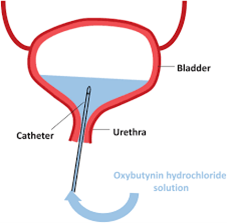The home health nurse observes a client self-administering an epinephrine injection using an auto-injector pen.
Which client action requires intervention by the nurse?
Administers onto the fleshy outer thigh.
Inserts the injection pen through clothing.
Cleanses the injection pen for re-use.
Cleans the injector pen for re-use.
The Correct Answer is C
A. Administers onto the fleshy outer thigh: This is the recommended site for epinephrine auto-injection because it allows for quick absorption into the bloodstream. The outer thigh is a large muscle area, which helps in the rapid distribution of the medication.
B. Inserts the injection pen through clothing: It is generally acceptable to inject epinephrine through clothing in an emergency situation. This practice ensures that there is no delay in administering the life-saving medication, which is crucial during an anaphylactic reaction.
C. Cleanses the injection pen for re-use: Epinephrine auto-injectors are designed for single use only. Reusing the pen can lead to contamination and reduced effectiveness of the medication. It is important to dispose of the used injector properly and obtain a new one for future use.
D. Holds the pen in place after injection: Holding the pen in place for a few seconds after injection ensures that the full dose of medication is delivered. This practice helps in maximizing the effectiveness of the treatment during an anaphylactic emergency.
Nursing Test Bank
Naxlex Comprehensive Predictor Exams
Related Questions
Correct Answer is C
Explanation
Oxybutynin is a medicine used to treat symptoms of an overactive bladder. One of the side effects of oxybutynin is that it can cause dry mouth, constipation, and dry skin21. These side effects can increase the risk of dehydration. Additionally, oxybutynin can cause flushing and heat stroke. Therefore, it is important for the client to take measures to avoid dehydration and over-heating while training for a marathon.

Correct Answer is C
Explanation
Continuous rubbing of the back of the neck can be a side effect of antipsychotic medication, known as acute dystonia. Benztropine is an anticholinergic medication that can effectively treat acute dystonia. Therefore, the nurse should give a PRN prescription for benztropine to relieve the client's discomfort. Options a, b, and d do not address the underlying issue of acute dystonia and are not the best interventions for this particular situation.
Whether you are a student looking to ace your exams or a practicing nurse seeking to enhance your expertise , our nursing education contents will empower you with the confidence and competence to make a difference in the lives of patients and become a respected leader in the healthcare field.
Visit Naxlex, invest in your future and unlock endless possibilities with our unparalleled nursing education contents today
Report Wrong Answer on the Current Question
Do you disagree with the answer? If yes, what is your expected answer? Explain.
Kindly be descriptive with the issue you are facing.
